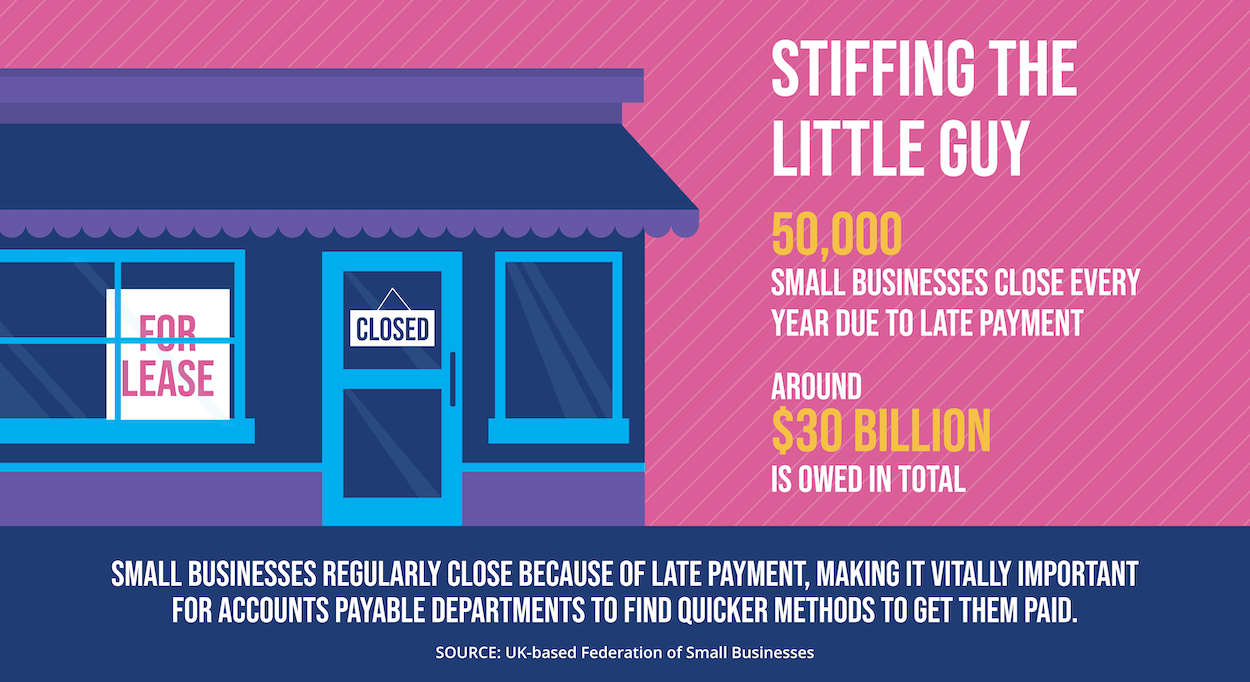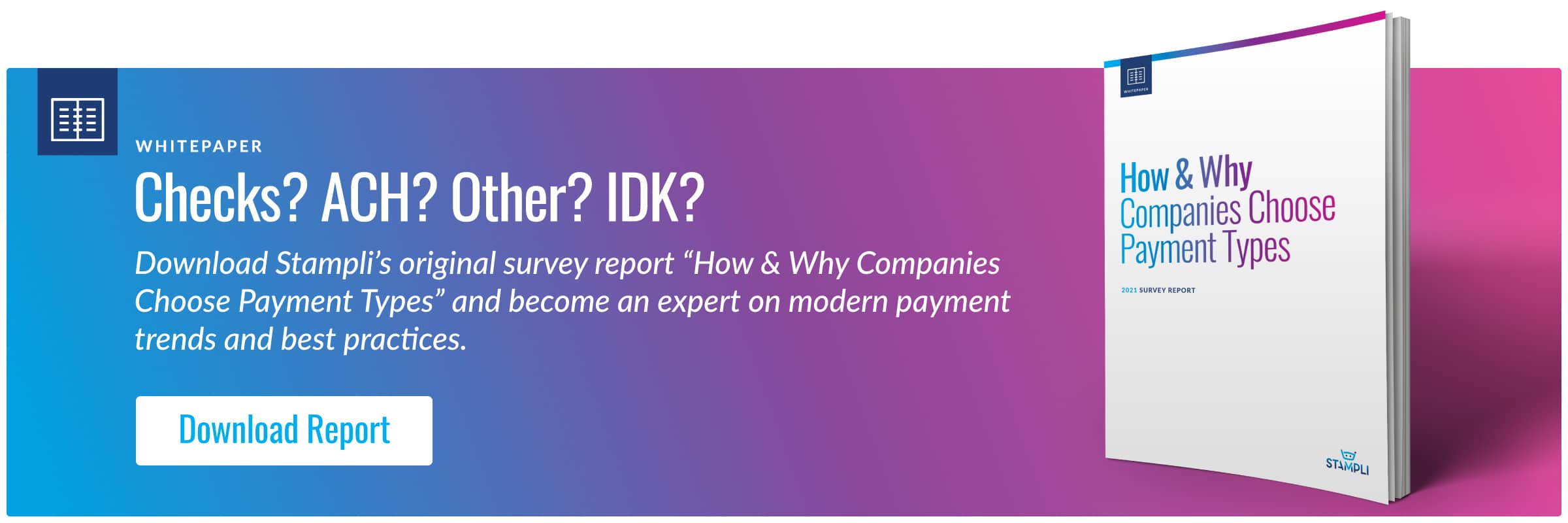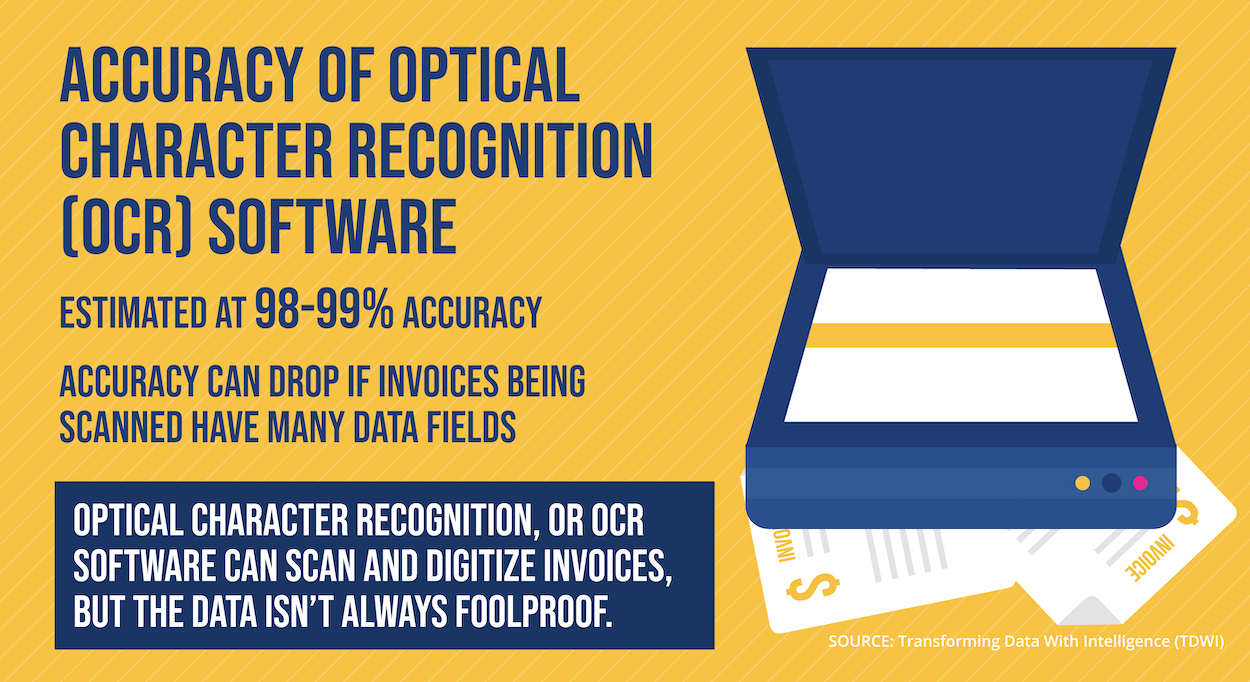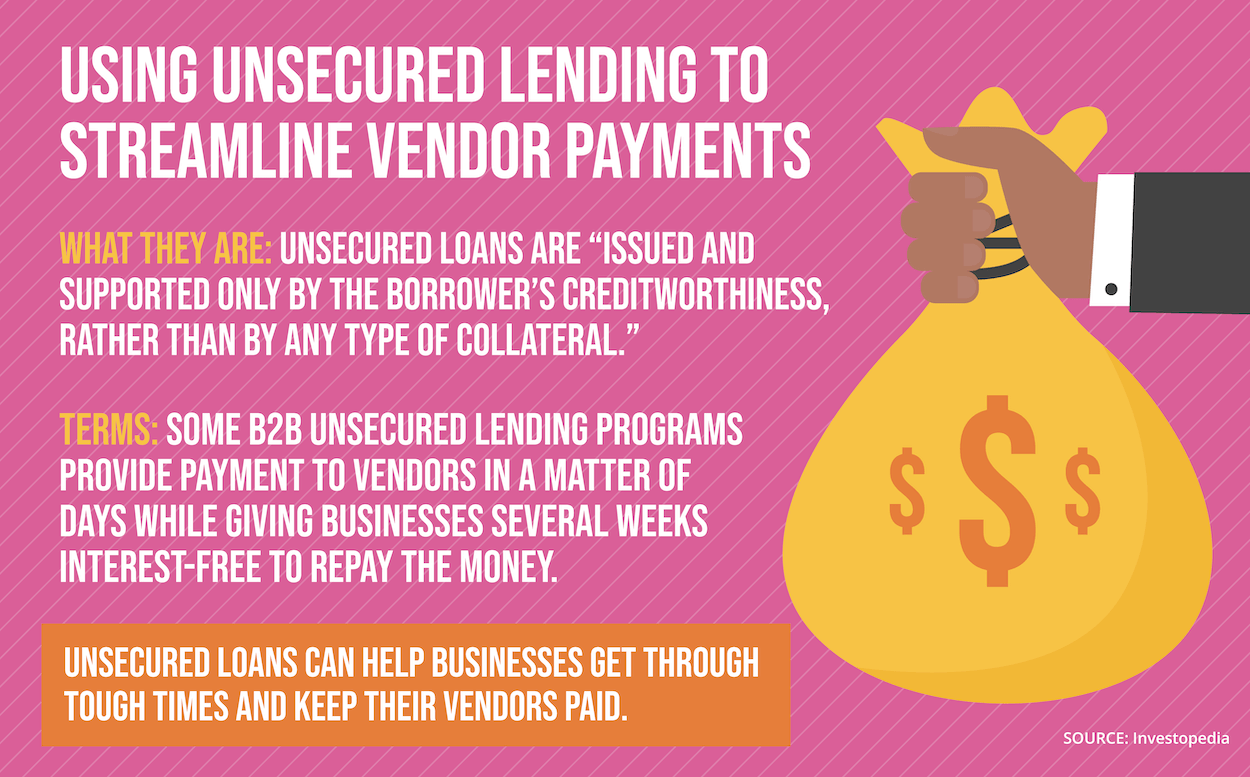Streamlining Supplier Payments

In an era of technological innovation, no accounts payable department should ever have to miss an early payment discount or pay vendor invoices late. All the same, some companies cling to outdated, manual processing methods no matter what it costs them in time, money or at the cost of supplier relations.
Needless to say, there are better methods for supplier payments. With the help of technology, accounts payable can shorten the invoice-to-pay lifecycle and help strengthen vital supplier relationships. Join us as we explore the inefficiencies with manual processes and build the case for streamlining supplier payment processes with AP Automation.
Traditional Ways Supplier Payments Have Been Processed

Manual accounts payable processes involve a lot of paper and for many companies today, they remain the status quo. Too many companies today still receive supplier bills by paper and manually key data into their accounting systems which is prone to laggards, late payments, and late fees.
Looking at traditional supplier payment processes and how almost every other department has adopted automation technologies, it’s time to focus on how accounts payable departments can streamline supplier bill processes.
Supplier Payments, Defined
Seemingly every business has suppliers or vendors which they work with to procure goods or services. Whether it’s a steel mill for a construction company or legal books for a law firm, most every business will require a strong network of suppliers to support their business.
But not every company can or will pay its bills on-time and there’s real cost for the suppliers left in limbo. While controlling spend is vital for an organization, it shouldn’t come at the cost of additional fees due to late supplier payments. Research from the UK-based Federation of Small Businesses estimated in September that 50,000 businesses close every year due to late payment, with the total amount owed around $30 billion.
Granted, some companies might try to delay paying bills until they are due which is understandable when it comes to controlling spend, or when it comes to leveraging float. For others, though, a variety of problems can delay the payment process which often results in duplicate supplier invoices, late fees, and supplier inquiries.

Problem No. 1: Separation of Processing, Approvals, and Payments
One reason things sometimes go more slowly than they should in accounts payable — is that companies with manual accounting practices will sometimes separate out the initial processing of invoices from the subsequent approval and payment steps with different technologies or manual processes.
For example: Accounts payable keys in the invoice data in one system, then sends the invoice for approval by email in another system, and finally, processes the invoice for payment in another system.
While it’s smart to ensure that every invoice is valid and not duplicate or fraudulent — which remains a glaring issue for far too many companies — having humans spend too much time reviewing invoices can create unnecessary snags. At worst, it’s a siloed process that increases the odds a company will pay its bills late or miss out on 2-3 percent discounts that vendors often will grant for early payment.
This is one reason that solution providers such as Stampli have introduced new, all-in-one features that enable companies to process, approve, and pay invoices all in the same place — with flexibility to pay outside the system and have data updated back in Stampli.
Problem No. 2: Manual, Rather than Automated AP Processes
Too many companies are still reliant on manual processes rather than automated accounts payable processing, meaning they are inputting information by hand into their accounting system from hundreds if not thousands of invoices over the course of a month or a year.
“That loyalty to one method comes at an increasing cost,” wrote PaymentsSource, adding that a report by Levvel Research found that “48 percent of AP professionals identified manual data entry and inefficient processes as their number-one pain point.”
Problem No. 3: An Unnecessarily Slow and Costly Process
Manual accounting processes proceed at a fraction of the pace of automated procedures, needing weeks for approval sometimes as opposed to a matter of days. This in turn drives up personnel costs associated with invoice processing. PaymentsSource noted that the cost of processing a vendor payment by check alone can range from $4 to $15.
It’d be one thing if this were the only way to process and pay supplier invoices. On the other hand as we’ll explore more in a bit, AP Automation beckons as an easy way to streamline supplier payments.
Four Reasons to Streamline Supplier Payments

There are many reasons to streamline supplier payments. Here are four of the most salient benefits of streamlining.
A. Time
Businesses can take a lot of time and human resources to process a single invoice, with PYMNTS.com noting that the average company requires 14.1 days, with approval from anywhere from 2-5 people before that invoice can be approved for payment. “It may even take more of each when invoice payments are particularly large or nonrecurring,” that site adds.
Needless to say, it’s an absurdly slow process when conducted manually. Multiply it by the hundreds or thousands of invoices the average business processes each month and it’s a recipe for disaster — particularly at the cost of duplicates, data entry errors, and late fees. Moreover, it’s nearly impossible to conduct manual processes due to the COVID-19 pandemic.
How streamlining payments helps: Even doing something as simple as receiving invoices digitally can cut two days off processing time, PYMNTS.com noted. Other innovations can yield a more profound benefit, with automation able to help one company’s accounting team spend 50 percent less time on AP processing, according to a Stampli case study.
B. Money
Invoice processing can be costly, too, as much as $30 for a single invoice to be processed manually. Between cumbersome data entry to time associated with waiting for approvals to lost early payment discounts, the costs can quickly add up. This is especially the case when applied over countless invoices. It’s money that a business doesn’t really need to spend.
How streamlining payments helps: Time is money, as the saying goes, and the savings can quickly start to add up when a business starts to streamline its supplier payment processes. For if a company is able to cut that $30 average manual processing cost, say, in half to $15 with more efficient methods of payment, that might equal thousands of dollars saved over the course of a single calendar month. As a result, this alone makes AP Automation software pay for itself.
C. Data
Workers loathe data entry, with a recent study showing it to be one of the most-hated workplace tasks, according to The Conversation. And unfortunately, with the sheer number of invoices that must be processed in accounts payable, this can lead to data entry mistakes and unreliable numbers. In the accounting world, the consequences for this can be severe and take months to discover the mistake.
How streamlining payments helps: Streamlining data entry in accounting generally means using intelligent optical character recognition (OCR) to automatically extract information from paper invoices which also learns your processes. Then over time, intelligent OCR will extract all the invoice data required to deliver accountability over the data capture and coding processes. As a disclaimer, there’s OCR and the there is intelligent OCR. Where OCR by itself is accurate at extracting invoice data. The when it comes to intelligent OCR, the accuracy increases exponentially due to the fact it’s combining artificial intelligence and machine learning to more accurately extract invoice data. All the while learning a companies coding processes to further mitagte manual data entry in the future.
D. Fraud
Fraudsters can be shameless and brazen in approaching companies and with the internet, they don’t even have to do it in-person.
The Calgary Herald wrote in February 2020 of an international scheme where would-be scammers posed as the CEO of a company, trying to convince one of her employees to mail a check. In this case, the company thought the email looked suspicious and had its security team dig in until suspicions were confirmed, though not every company will have this foresight.
How AP Automation prevents fraud: Whether companies have sophisticated web security systems or not, AP Automation not only streamlines processes but also combats fraud. AP Automation software like Stampli come with built in tools to flag duplicates, enables segregation of duties, supports internal controls and identifies mismatches.
How to Streamline Payments to Your Vendors
For companies looking to streamline their vendor or supplier payment processes, the good news is that there are tools that can help companies achieve this goal. Some might be concerned over managing change when it comes to processes, they can be rest assured as tools like AP Automation works with their current processes and systems.
While deploying an easy to use AP Automation tool can be the answer to streamlining supplier payments, so can be people and processes as we discuss below.
Follow Best Practices for Accounts Payable
For accounting, best practices that can streamline supplier payments include batch-processing of checks and ACH (Automated Clearing House) payments. Daily reconciliations are also smart, comparing “two sets of records to check that figures are correct and in agreement” and confirming “that accounts in the general ledger are consistent, accurate, and complete,” according to Investopedia.
In addition, businesses can look to shift electronic B2B payments via ACH, which is already hugely popular for direct deposit and has been dominating B2B transactions in recent years as well.
Build Relationships With Your Suppliers and Be Proactive
Most every business might know the importance of building good relationships with clients. As Stampli founder and CEO Eyal Feldman told a reporter earlier this year, “Clients still want to be treated as more than a transaction. They still want a relationship.”
The same applies with suppliers, with good relationships and proactive work able to help the supplier payment process run more smoothly.
Companies on good terms with their suppliers can look to extend terms of payment, request discounts, and arrange payment schedules. They can also try to build the case for vendors to accept alternative payment methods. For example with ACH, accounts payable can issue payments faster to their suppliers without putting fees on them like other payment methods such as credit cards or virtual cards (e.g. e-payments).
Get Resourceful in Unprecedented Times with Lending and Credit

So many businesses during the COVID-19 pandemic have turned to the U.S. Small Business Administration for Paycheck Protection Program (PPP) and Economic Injury Disaster Loan (EIDL) payments. But while PPP and EIDL loans have gotten a lot of press over the last eight months, there are subtler strategies that AP personnel can execute around lending and credit, both to get through tough times and streamline payments.
Unsecured loans, which are extended without collateral, can help businesses pay their vendors without immediately having to come up with the money. One example, American Express’ working capital solutions, gets vendors paid within five days while allowing businesses up to 55 days interest-free for repayment.
Businesses can also look to time their credit card payments around key periods for cashflow.
Consider a Supplier Payment Automation Solution
Of course, humans can only do so much. To ensure control over payments, companies should consider an accounting automation solution like Stampli that, as noted earlier, can process, approve, and pay invoices all in one. All the while giving you the freedom to pay with your desired payment method.
Among other features, Stampli’s software offers effortless payments and reconciliation, with its Stampli Direct Pay feature providing maximum payment flexibility. Payment approval processes are also streamlined through Stampli, with painless access to every key detail and document that’s needed for payment approval.
There’s no need to be bogged down with slow supplier payments. With tools like Stampli, businesses can start streamlining payments in short order.
Don’t be late, automate. Learn how to supercharge your business payments with Stampli’s Payment Automation Field Guide.
